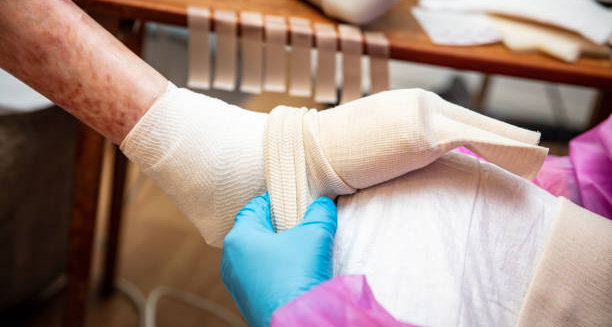Complications of Epidermolysis Bullosa
The complications of epidermolysis bullosa can be severe, painful, and life-altering. Because epidermolysis bullosa affects the body’s largest organ—the skin—it leads to both local and systemic health challenges. Complications vary by type and severity but require ongoing attention throughout life.
Skin Infections
Open wounds and frequent blistering increase the risk of:
Bacterial infections like Staphylococcus or Streptococcus
Cellulitis, a spreading infection of the skin
Sepsis, a life-threatening body-wide infection
Poor hygiene, limited dressing supplies, and malnutrition increase these risks, especially in under-resourced areas.
Anaemia and Malnutrition
Chronic wounds can cause blood loss, leading to:
Iron-deficiency anaemia, resulting in fatigue and weakness
Poor appetite and growth delays, especially in infants and children
Vitamin and mineral deficiencies, from restricted diets or pain when eating
Feeding tubes are often needed in severe cases, but may not be readily available in public hospitals.
Scarring and Contractures
Repeated blistering leads to:
Thick scars and adhesions, particularly on joints and fingers
Contractures, where limbs become stuck in bent positions
Reduced mobility and loss of independence
In severe dystrophic EB, fingers may fuse together, a condition known as pseudosyndactyly.
Vision and Dental Problems
Corneal abrasions, from eye blisters
Tooth decay and enamel defects, especially in junctional EB
Gum disease, leading to pain and difficulty eating
Good oral hygiene and specialist dental care are vital but not always accessible in rural settings.
Skin Cancer Risk | Complications of Epidermolysis Bullosa
In older children and adults with severe EB, the risk of squamous cell carcinoma (SCC) is much higher than in the general population. These cancers may grow rapidly and are difficult to treat due to skin fragility.
Psychological Effects
Living with EB can lead to:
Depression, anxiety, and social isolation
Body image concerns, especially in teens
Post-traumatic stress, from ongoing pain and repeated hospitalisation
Family counselling and peer support groups can help reduce emotional stress and build resilience.
In South Africa, the complications of EB are often worsened by delayed diagnosis, lack of wound care supplies, and socioeconomic challenges. NGOs, online communities, and local clinics are crucial in offering education and support.
The complications of epidermolysis bullosa are serious but manageable. With the right care, many patients can live longer, more comfortable lives despite the condition’s challenges.


